Rock painting. Cave painting
Rock paintings are unique drawings of the inhabitants of the Paleolithic era, the first confirmation of the primitive art and aesthetics of our ancestors who lived in what is now Europe and Asia. This most important milestone in history was discovered by an amateur archaeologist from Spain, Marcelino-Sans de Sautuola, in 1879 by accident. While walking with his daughter, he came across the Altamira cave, covered with rock paintings. This is the first official discovery of this kind of creativity, which later was studied and discovered from a new side every year.
By the 20th century, an explanation of the reasons for the appearance of rock paintings was finally formed. It became very clear that the drawings had several functions. Firstly, historical, inherent in modern creativity: to perpetuate a moment in history. For example, going to war. Secondly, cosmogonic: to reveal the vision of the world in that era, its structure and representation of gods, people and spirits. Thirdly, magical. People believed that the image of a hunt would definitely bring good luck in a real trip to a wild animal. Of course, the religious function was important. The rock painting of a local god was the prototype of modern icons. And, finally, the aesthetic function, which allows a person to express his own emotions.
While some scientists studied the reasons for the appearance of rock art, others were interested in the process of its implementation. For artists this was important primarily from a historical point of view. To begin with, the images were classified by color: monochrome, multicolor and polychrome images. Then the manner of execution of the images was closely studied. Ancient people used clay, manganese oxide and charcoal as paints. To create an astringent consistency, they were mixed with resin and animal fat, and instead of brushes, fingers were most often used, although hollow tubes and reeds were sometimes used.
A fundamental difference was noted in the approach to the drawings. A huge number of objects are drawn schematically at the modern level children's creativity. The authors seemed to purposefully strive to depict only a sketch, conveying a symbol of the drawing sufficient for recognition. The other part of the images is in no way inferior in level of execution to the works of Renaissance artists. These drawings contain a variety of colors, masterful expression and movement.
From the question of execution technique follows the question of the meaning of the image. And here it is worth noting that the main motives of primitive creativity were animals: deer, bison, horses, wild boars, mammoths, bears. Most likely, this choice was due to religious and magical themes. The assumption that our ancestors believed in a successful outcome of the hunt if a drawing of the future trophy was depicted, albeit schematically, has been historically confirmed more than once. In this sense, the rare image of fish also receives its explanation. Fish are not as dangerous creatures as wild animals; for successful fishing, drawings and magic are not needed, but only dexterity and skill.
A more thorough approach to creativity, namely the special aesthetics of drawings, apparently has a social role. Most likely, primitive artists strived for beauty while trying to demonstrate their creative abilities. Drawings of this kind were most often made on social themes: for example, building a fireplace or spending time. Thanks to rock art, a huge layer of information has opened up for historians that was previously inaccessible. For example, it turned out that gambling appeared more than 3,500 years ago, its origins are attributed to the Minoan civilization, and these facts were confirmed by cave paintings of a card duel. Obviously, the rules of that game were significantly different from modern rules, but this confirms the desire of people to have fun many thousands of years ago.
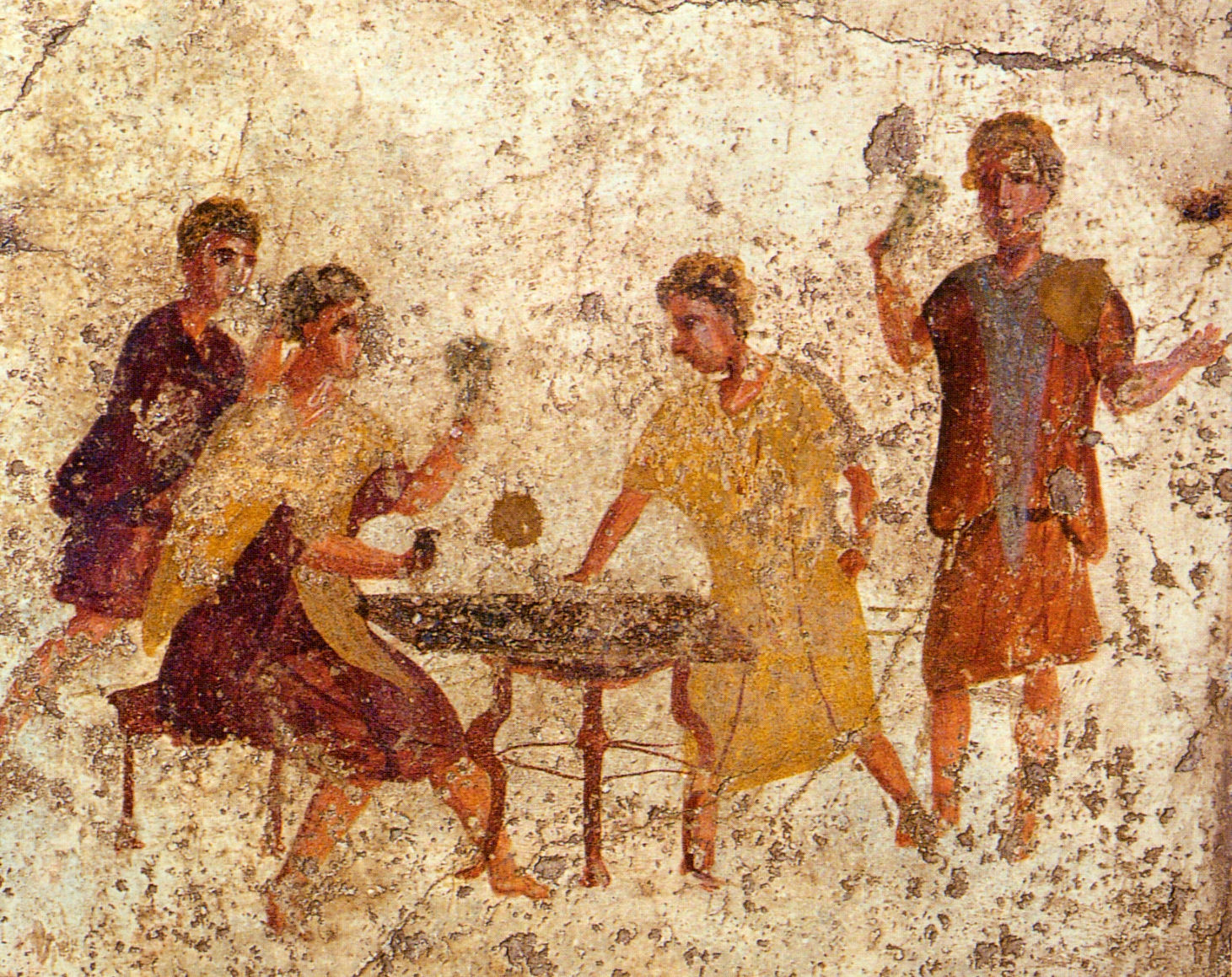
Another unique discovery was made thanks to the same Altamira cave. It became clear that bison, which were the ancestors of European bison, lived in Spain. And rock paintings in Siberia helped to finally clarify the habitat of the woolly rhinoceros and its appearance. Without rock paintings, it was not possible to reproduce what this animal looked like in real life. An even more shocking discovery was made in the caves of the Sahara. It turned out that the greatest desert in the world was once a very prosperous place, a shelter for hundreds of animals.
It's obvious that rock painting served as a means of entertainment, religion and magic for primitive people. Fortunately, its most important function turned out to be introducing humanity to primitive art and the discovery of another huge cultural, historical and cosmological layer of civilization.
Cave or rock paintings are drawings that are found on the walls and ceilings of caves and rock surfaces. Made during the prehistoric period, the images date back to the Paleolithic era, approximately 40,000 years ago. Some scientists believe that cave paintings of primitive people are a way of communicating with the outside world. According to another theory, the drawings were applied for ceremonial or religious purposes.
| http://mydetionline.ru |
History of discovery
In southwestern France and northern Spain, archaeologists have discovered more than 340 caves containing images from prehistoric times. Initially, the age of the paintings was a controversial issue, since the radiocarbon dating method could be inaccurate due to the dirty surfaces that were examined. But further development of technology made it possible to establish the exact period of drawing images on the walls.
| http://allkomp.ru/ |
The chronology can also be determined by the themes of the drawings. Thus, the reindeer depicted in the Cueva de Las cave, which is located in Spain, dates back to the end of the Ice Age. The earliest drawings in Europe were discovered in the Chauvet Cave in France. They appeared 30,000 BC. The surprise for scientists was that the images had been altered many times over thousands of years, which caused confusion in the subsidization of the drawings.
Painting in three stages
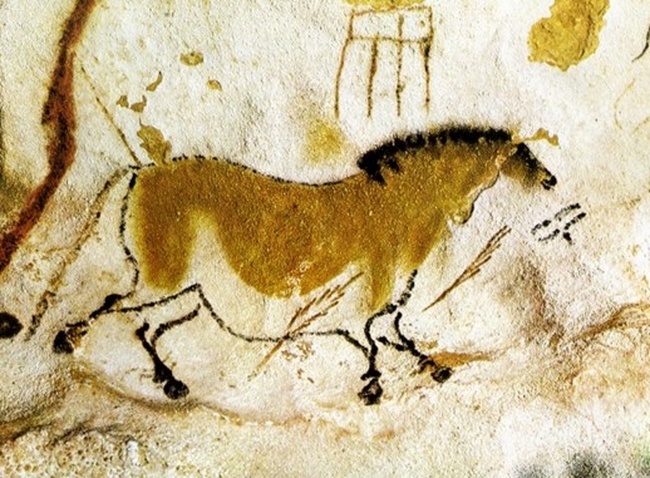
There are monochrome and polychrome cave paintings. Polychrome rock painting was created in three stages and depended entirely on the experience and cultural maturity of the artist, lighting, type of surface and available raw materials. At the first stage, the contours of the depicted animal were outlined using charcoal, manganese or hematite. The second stage involved completing the drawing and applying red ocher or another pigment to the image. At the third stage, contours were drawn in black to visually enlarge the image.
Subjects and themes
The most common subject in the cave paintings of primitive people is the image of large wild animals. At the beginning of the Stone Age, artists painted:
- Lviv;
- rhinoceroses;
- saber-toothed tigers;
- bears.
Images of animals hunted by people appear during the Late Paleolithic period. The image of a person is very a rare event and the pictures are less realistic than the painted figures of animals. In primitive art there are no images of landscapes and landscapes.
Work of ancient artists
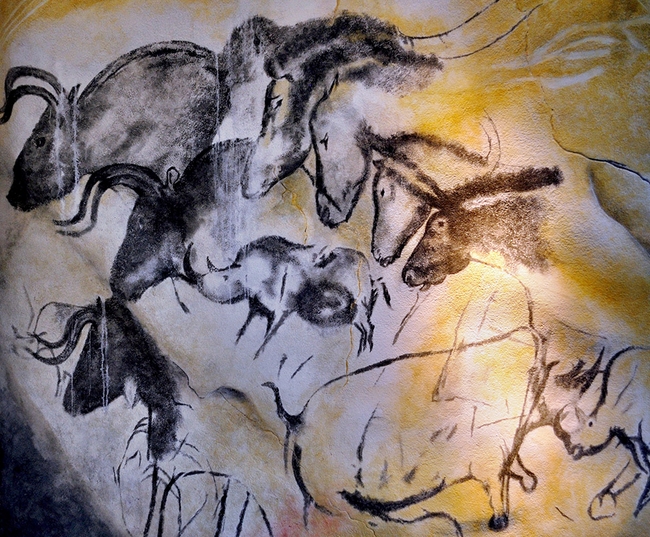
Prehistoric inhabitants of the planet discovered that paint made from animals and plants is not as stable as paint extracted from the earth. Over time, people have determined the property of iron oxides in the ground not to lose their original appearance. Therefore, they looked for hematite deposits and could walk tens of kilometers a day to bring the dye home. Modern scientists have discovered paths leading to deposits along which ancient craftsmen plied.
Using sea shells as a reservoir for paint, working by candlelight or weak daylight, prehistoric painters used a variety of painting techniques and techniques. At first they painted with their fingers, and then moved on to crayons, moss pads, animal hair brushes, and plant fibers. They used a more advanced method of spraying paint using reeds or bones with special holes.
Holes were made in the bird's bones and filled with red ocher. By studying the cave paintings of ancient people, scientists have determined that such devices were used 16,000 BC. In the Stone Age, artists also used the techniques of chiaroscuro and foreshortening. In each era, new painting methods appear and the caves are replenished with drawings made in new styles over many centuries. The ingenious works of prehistoric artists have inspired many modern masters to create beautiful works.
On December 18, 1994, the famous French speleologist Jean Marie Chauvet discovered a cave gallerycancient images of animals. The discovery was named in honor of its discoverer — Chauvet cave. We decided to talk about the most beautiful caves with rock paintings.
Chauvet Cave
The discovery of the Chauvet Cave in the south of France near the town of Pont d'Arc became a scientific sensation that forced us to reconsider the existing understanding of the art of ancient people: it was previously believed that primitive painting developed in stages. At first, the images were very primitive, and more than one thousand years had to pass for the drawings on the walls of the caves to reach their perfection. Chauvet's find suggests the opposite: the age of some images is 30-33 thousand years, which means that our ancestors learned to draw even before moving to Europe. The discovered rock art represents one of the oldest examples of cave art in the world, in particular, the drawing of black rhinoceroses from Chauvet is still considered the most ancient. The south of France is rich in such caves, but none of them can compare with the Chauvet Cave either in size, or in the preservation and skill of the drawings. Mostly animals are depicted on the walls of the cave: panthers, horses, deer, as well as woolly rhinoceros, tarpan, cave lion and other animals of the Ice Age. In total, images of 13 different species of animals were found in the cave.
Now the cave is closed to tourists, as changes in air humidity can damage the images. Archaeologists can only work in a cave for a few hours a day. Today, the Chauvet Cave is a national treasure of France.
Caves of Nerja
The Caves of Nerja are an amazingly beautiful series of huge caves near the city of Nerja in Andalusia, Spain. They received the nickname "Prehistoric Cathedral". They were discovered by accident in 1959. They are one of the main attractions of Spain. Some of their galleries are open to the public, and one of them, which forms a natural amphitheater and has excellent acoustics, even hosts concerts. In addition to the world's largest stalagmite, several mysterious drawings were discovered in the cave. Experts believe that seals or fur seals are depicted on the walls. Fragments of charcoal were found near the drawings, the radiocarbon dating of which gave an age between 43,500 and 42,300 years. If experts prove that the images were made with this charcoal, the seals of the Nerja Cave will turn out to be significantly older than the cave paintings from the Chauvet Cave. This will once again confirm the assumption that Neanderthals had the ability for creative imagination no less than that of Homo sapiens.
Kapova Cave (Shulgan-Tash)
This karst cave found in Bashkiria, on the Belaya River, in the area of which the Shulgan-Tash nature reserve is now located. This is one of the longest caves in the Urals. Cave paintings of ancient people from the Late Paleolithic era, the likes of which can only be found in very limited places in Europe, were discovered in Kapova Cave in 1959. Images of mammoths, horses and other animals are made mainly with ocher, a natural pigment based on animal fat, their age is about 18 thousand years. There are several charcoal drawings. In addition to animals, there are images of triangles, stairs, and oblique lines. The most ancient drawings, dating back to the early Paleolithic, are in the upper tier. On the lower tier of the Kapova Cave there are later images of the Ice Age. The drawings are also notable for the fact that human figures are shown without the realism inherent in the animals depicted. Researchers suggest that the images were made in order to appease the “gods of the hunt.” In addition, cave paintings are designed to be perceived not from one specific point, but from several angles of view. To preserve the drawings, the cave was closed to the public in 2012, but an interactive kiosk was installed in the museum on the territory of the reserve for everyone to look at the drawings virtually.
Cueva de las Manos cave
Cueva de las Manos (“Cave of Many Hands”) is located in Argentina, in the province of Santa Cruz. Cueva de las Manos became world famous in 1964 thanks to the research of archeology professor Carlos Gradin, who discovered many wall paintings and human handprints in the cave, the oldest of which date back to the 9th millennium BC. e. More than 800 prints, overlapping each other, form a multi-colored mosaic. So far, scientists have not come to a consensus about the meaning of the images of hands, from which the cave got its name. Mostly left hands were captured: out of 829 prints, only 36 were right hands. Moreover, according to some researchers, the hands belong to teenage boys. Most likely, drawing an image of one’s hand was part of the initiation rite. In addition, scientists have built a theory about how such clear and clear palm prints were obtained: apparently, a special composition was taken into the mouth and forcefully blown through a tube onto a hand attached to the wall. In addition to handprints, on the walls of the cave there are depictions of people, rhea ostriches, guanacos, cats, geometric figures with ornaments, and hunting processes (the pictures show the use of bolas, a traditional throwing weapon of the Indians South America) and observations of the sun. In 1999 the cave was included in the list World Heritage UNESCO.
Lascaux Cave
The cave received the nickname “Sistine Chapel of primitive painting”, it has no equal in quantity, quality and preservation rock paintings. It was discovered in 1940 by four teenagers near the city of Montignac, France. The paintings and engraved drawings that are located here do not have an exact dating: they appeared around the 18th-15th millennium BC. e. and depict horses, cows, bulls, deer, bears. In total, there are about six hundred drawings of animals and almost one and a half thousand images carved on the walls. The drawings are made on a light background with shades of yellow, red, brown and black. Scientists claim that ancient people did not live in this cave, but used it exclusively for drawing, or the cave was something of a cult place. The Lascaux Cave was included in the UNESCO World Heritage List in 1979.
Video
“Everyone is trying to understand painting.
Why don't they try to understand birdsong?"
P. Picasso
The history of the discovery of the Lascaux cave
The Lascaux (or Lascaux) cave is located in France, in the Périgord region. In the same area there is another ancient cave, Cro-Magnon.
There is an inconsistency floating around the Internet: the Lascaux cave is called the “Sistine Chapel of primitive painting.” It’s strange, but such a comparison was made by Sautuola (the discoverer of cave painting) regarding. In principle, both of these caves can be compared with the great cultural monument late 15th century.
Chinese horse, one of the most famous images from the Lascaux cave
The cave was discovered by four young men on September 12, 1940: Marcel Ravid, Jacques Marsal, Georges Agnier, Simon Concas. They became interested in the cave because of a legend: supposedly treasures were hidden in it. To some extent, this legend turned out to be true, since the found rock paintings are not treasures?
The first to explore the cave was Henri Breuil (an antiquities specialist), but the scientific world learned about Lascaux only after 1945.
Who drew and whom
The cave paintings of the Lascaux cave belong to Solutrean archaeological culture, their age is 18 - 15 thousand years BC. In total there are more than 2000 drawings, including images of bulls, bison, cows, horses, cats, bison, one image of a reindeer, fuzzy and sketchy, people, as well as some signs, symbols, dots.
Ocher, manganese oxide and iron oxide were widely used among dyes. Ancient artists crushed the mineral, and the resulting dye was mixed with water or animal fat. The technique of applying paint with water is similar to the watercolor technique. In addition to this technique, the artists used engraving - they cut out the outlines of the image in the walls of the cave and filled them with paint.
Below is a plan of the Lascaux Cave. The names of the individual parts were given by Henri Breuil, and they are still used today.
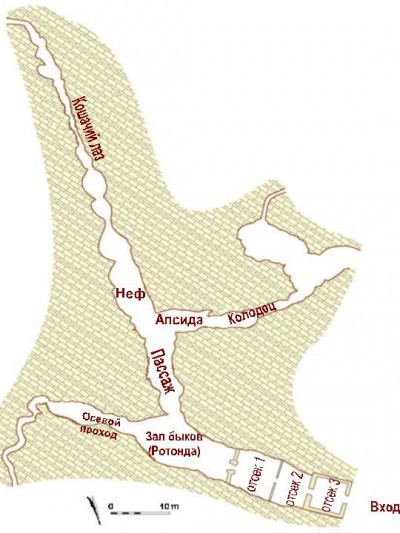
Lascaux Cave in France, rough plan
Images of the Hall of the Bulls (Rotunda):
This part of the cave reaches 20 meters in length, the width ranges from 5.5 to 7.5 meters. The brightest and most meaningful room. The walls of the cave here are light, almost white, which enhances the effect of rock paintings.
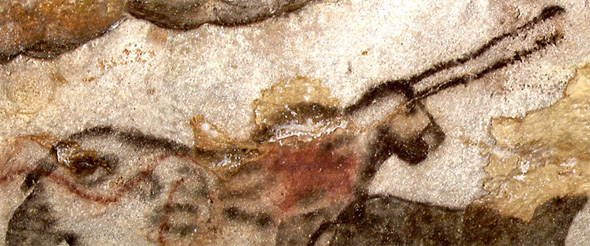
Unicorn. This is one of the first images in the cave, unique. Many researchers believe that this is a mythical beast.
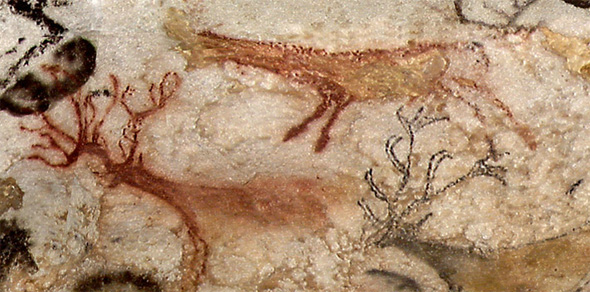
Group of five deer, only 3 fit in the photo
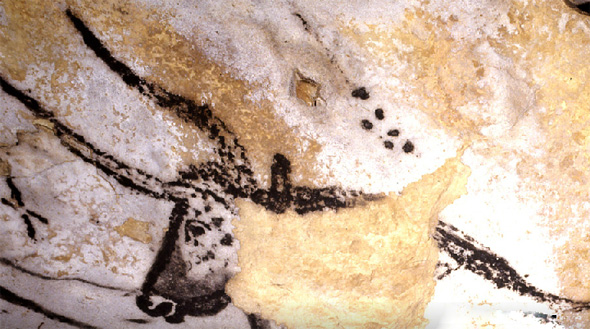
This is the largest effigy of a bull ever discovered, measuring over 5 meters in length. The six dots above his head have intrigued many researchers; there is even a hypothesis put forward by scientists Chantal Jaguet-Valkivi, Michael Rappenglück and Frank Edge that this is a reference to the constellation Taurus (the dots symbolize the Pleiades cluster)
Axial Passage Images:
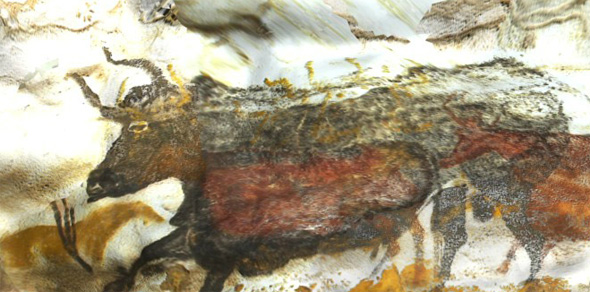
Large black bull, 3.71 meters long and 1.93 wide. The paint was applied in two ways: by spraying through a specially made tube and by brush
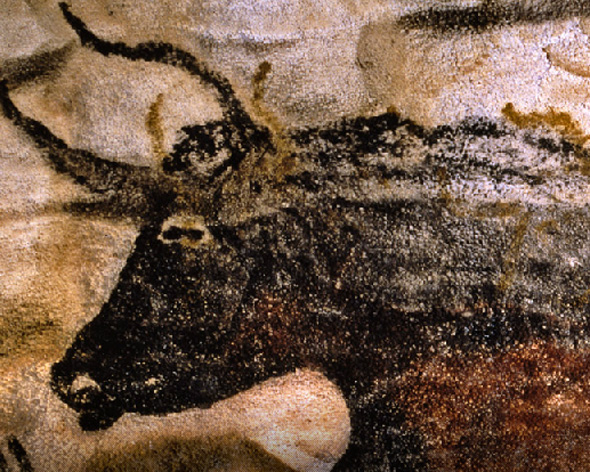
Big Black Bull, fragment
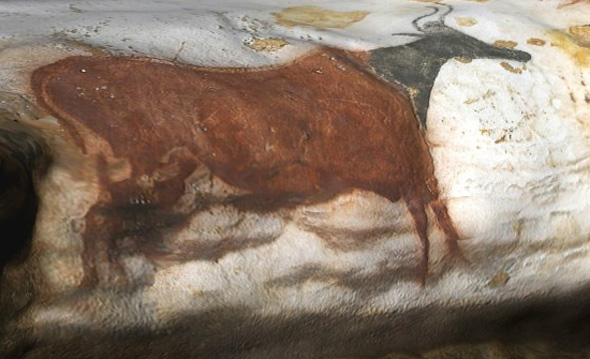
Cow with black head
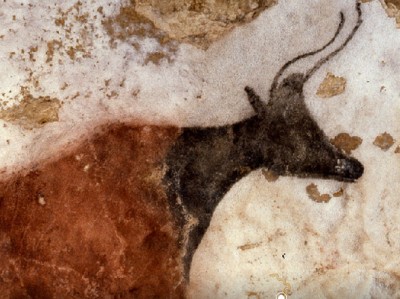
Cow with a black head, fragment
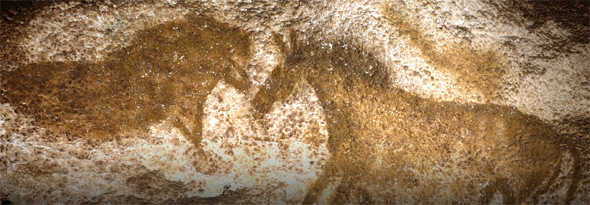
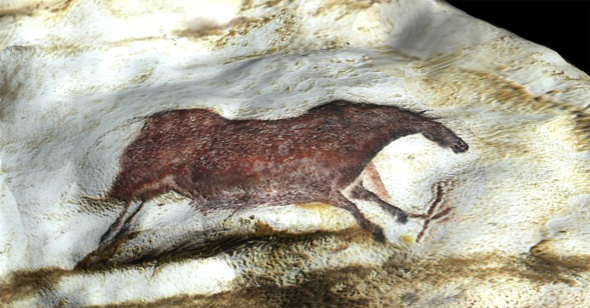
Images of the Cat Room:
This room received its name because of the six representatives of felines depicted here (predators were rarely depicted in cave paintings). In addition to cats, there are also bulls, deer, horses, and some other signs on the walls.
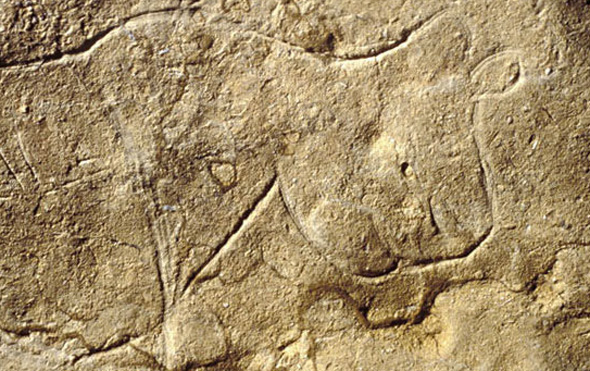

In this part there is a single image of a horse from the front (animals, as can be seen above, were most often painted by ancient artists from the side).

Horse front view
Well image:

From the primitive drawings left on the walls of dwellings by ancient people thousands of years ago, you can find out not only how many mammoths were killed by hunters, but also how humanity has changed
Rock art in the Sierra de San Francisco. Mexico
The images were taken from 100 BC. e. to 1300 AD e. Some reach two meters in size. Perhaps that is why later legends tell of a race of giants living here.
Cultural landscape of rock paintings of Gobustan. Azerbaijan
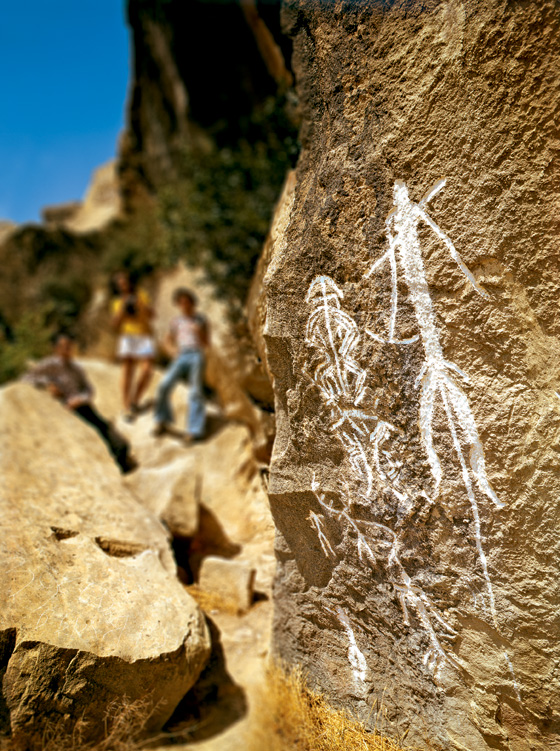
More than 6000 images, people and animals. Some are almost life-size. They date back to the early Neolithic (8th millennium BC). An important place is given to carefully drawn female figures - the head of the clan was the mother.
Tassilin-Ajer plateau. Algeria
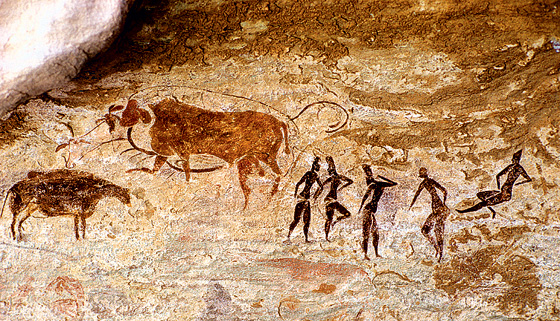
One of the oldest centers of human habitation in the Sahara. Based on the subjects of 15,000 drawings, one can trace how the climate has changed since the 6th millennium BC. e. until the first centuries AD e.
Archaeological Park of San Agustin. Colombia
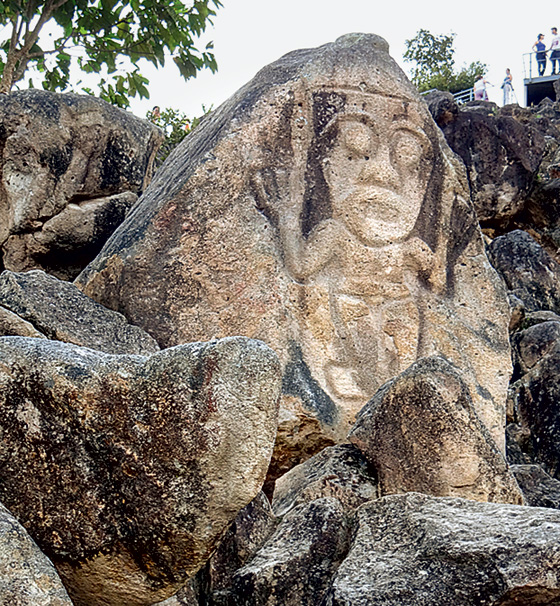
The bulk of the images are from the 1st-8th centuries. Initially they were colored. The statues have dilated pupils (perhaps reflecting the tribal tradition of using hallucinogens during rituals).
Ancient human sites in the Yagul and Mitla caves in the center of the Oaxaca Valley. Mexico
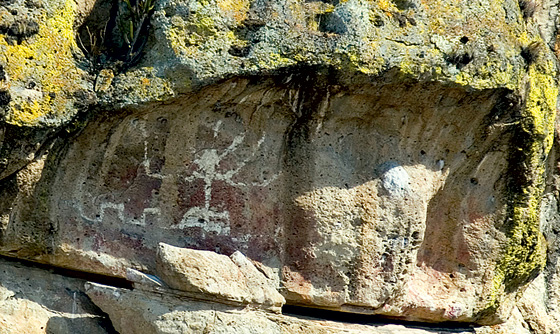
The drawings in the Yagul cave appeared 3000 BC. e.
Murals of the Grotto Chauvet-Pont d'Arc cave, Ardèche region. France
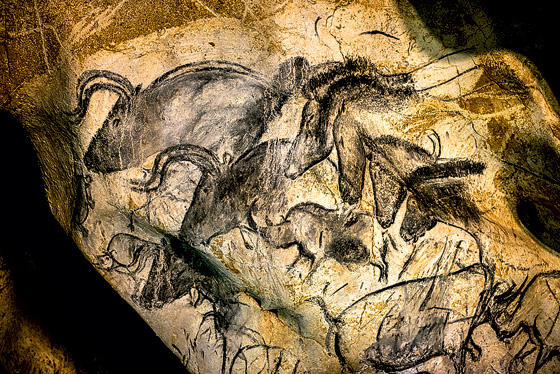
A copy of the drawings from the Chauvet Cave. The original ones were created 30,000-32,000 years ago (now only archaeologists are allowed to enter Chauvet; a copy of the cave will be opened this year).
Bhimbetka cliff dwellings. India

Paintings from the Mesolithic period to the end of prehistoric times. The subjects of the rock paintings reflect some of the traditions of local residents that have survived to this day.
Rock art at Kondoa. Tanzania
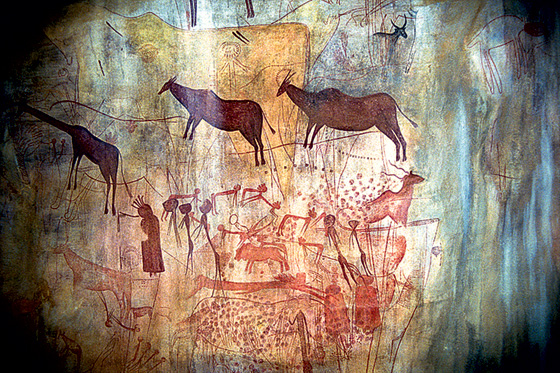
The drawings have been made for at least two millennia. Some still have sacred meaning for people from nearby villages.
Altamira Cave and Paleolithic rock art in northern Spain. Spain
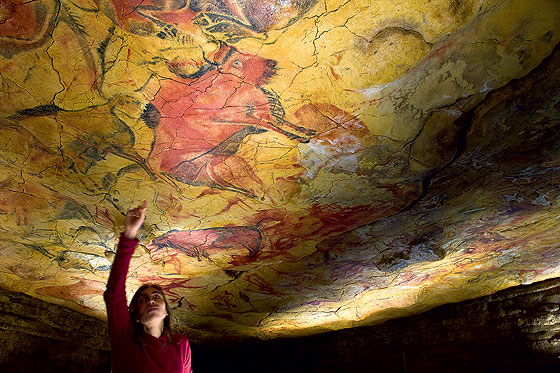
Copies of drawings of one and a half and two meter animals from the Late Paleolithic era (15,000-11,000 BC). The originals are in a nearby cave. Having visited here, Picasso said: “After the work in Altamira, all art began to decline.”
Rock art in the Tsodilo area. Botswana
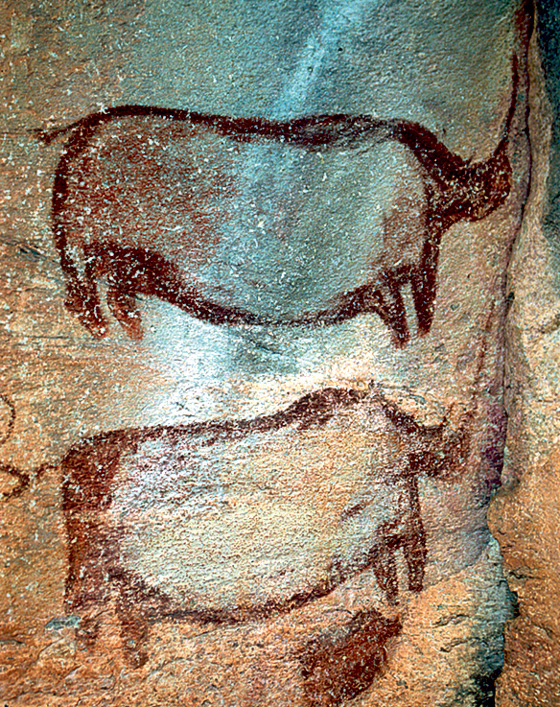
4500 drawings. Most are located on the so-called “women’s hill”. According to the beliefs of local tribes, the gods rule the world from here.
Complexes of petroglyphs of the Mongolian Altai. Mongolia
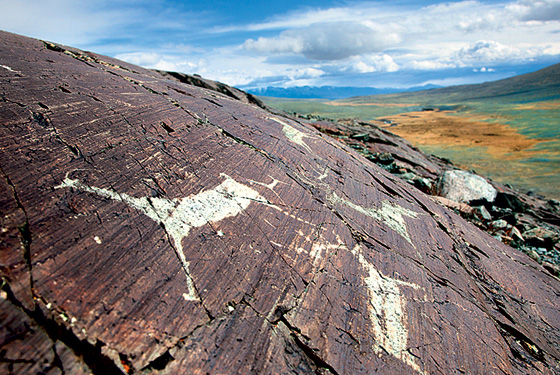
Early depictions date back to the period when there were forests with game (11,000-6,000 BC).
Rock art in Val Camonica. Italy
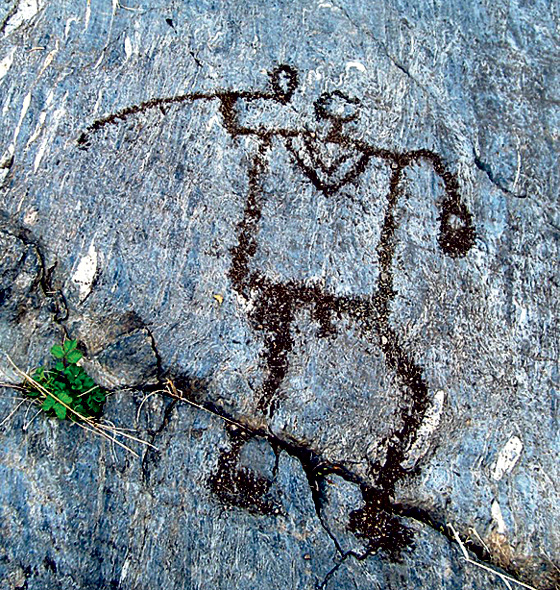
The oldest drawings were created 8,000 years ago.
Rock paintings in Alta. Norway
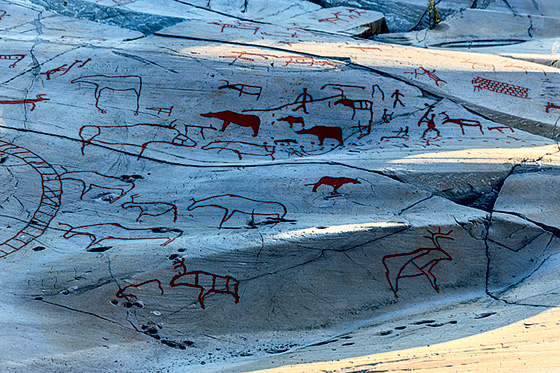
The original images (4200-500 BC) are colorless. Some were painted for tourists.
Petroglyphs of Twyfelfontein. Namibia
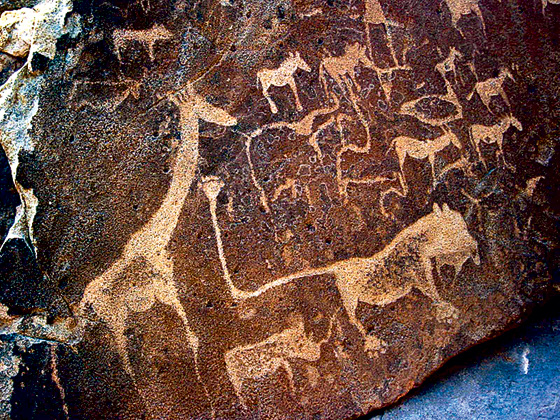
The first petroglyphs appeared here 5,000 years ago.
Rock paintings in caves along the Weser River. France
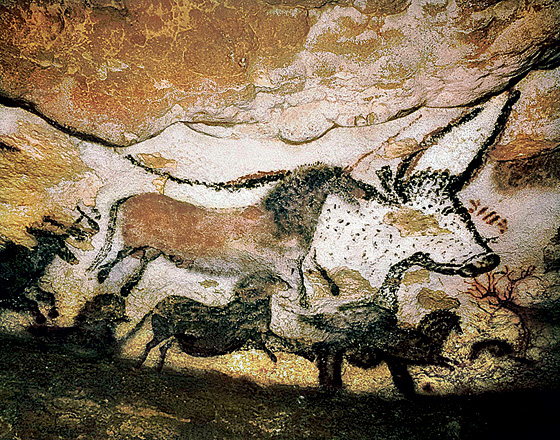
The paintings in the Lascaux cave are over 17,000 years old. There is no access to the cave; a copy of it is located nearby.
Serra da Capivara National Park. Brazil
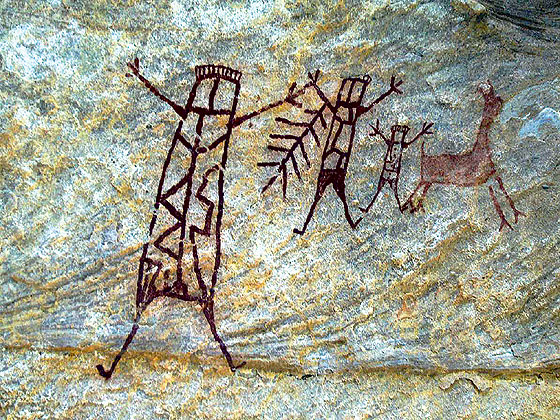
The age of the paintings is more than 25,000 years, which proves the existence of one of the most ancient human communities in South America.
Prehistoric rock art in Ciega Verde. Spain
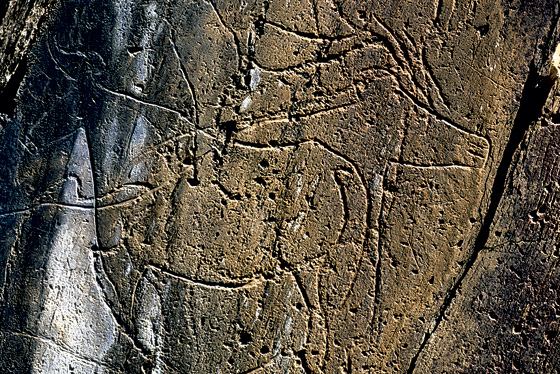
Among several hundred images (22,000-8,000 BC), a person appears only once.
Rock art in the Tadrart-Akakus mountains. Libya

The drawings were made from 12,000 BC. e. before 100 AD e. Evidence of climate change. Once upon a time there were forests and lakes in the Sahara.
Neolithic site Çatalhöyük. Türkiye
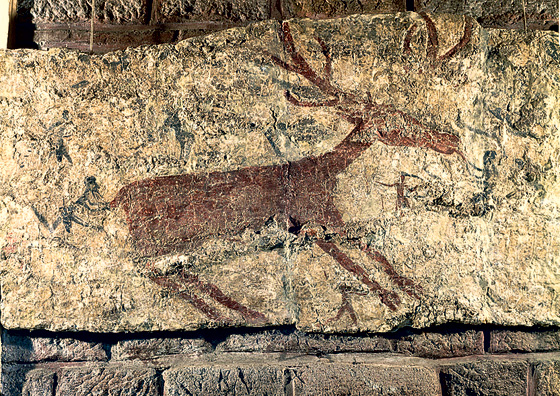
Images decorated the walls of people’s homes in the 8th-6th millennium BC. e.
Rock reliefs in Tanum. Sweden
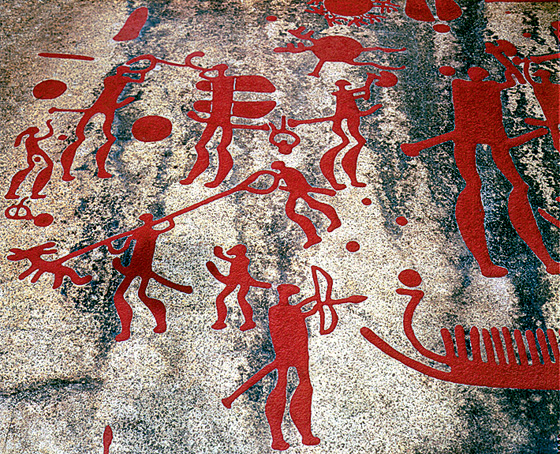
The drawings were carved no later than 1500 BC. e. Some are painted for tourists.
Al-Hijr archaeological site. Saudi Arabia
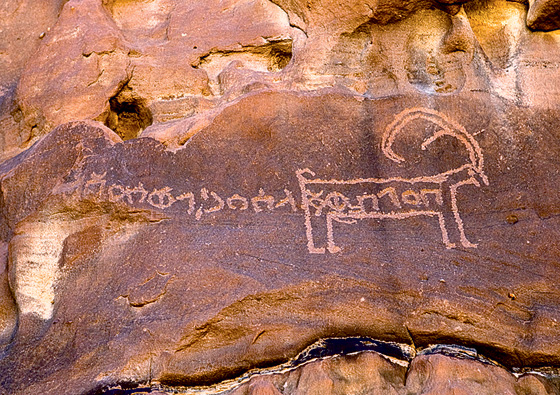
The first images were created about 15,000 years ago.
Petroglyphs of the archaeological landscape of Tamgaly. Kazakhstan
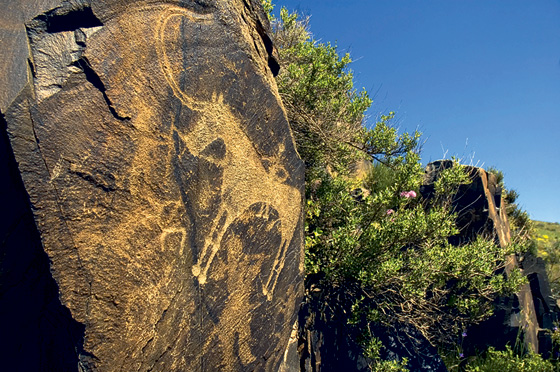
The oldest petroglyphs date back to the second half of the 2nd millennium BC. e.
Photo: Pavel Balabanov / RIA Novosti, Alamy / Legion-media (x4), Karolynaroca (cc-by-sa), Diomedia, AFP / East News, AGE / Legion-media, Alamy / Legion-media (x2), Shutterstock ( x2), Luca Giarelli (CC-BY-SA 3.0), Thomas Schoch (CC-BY-SA 3.0), AFP / East News (x2), Shutterstock (x2), Alamy / Legion-media (x2), Diomedia
